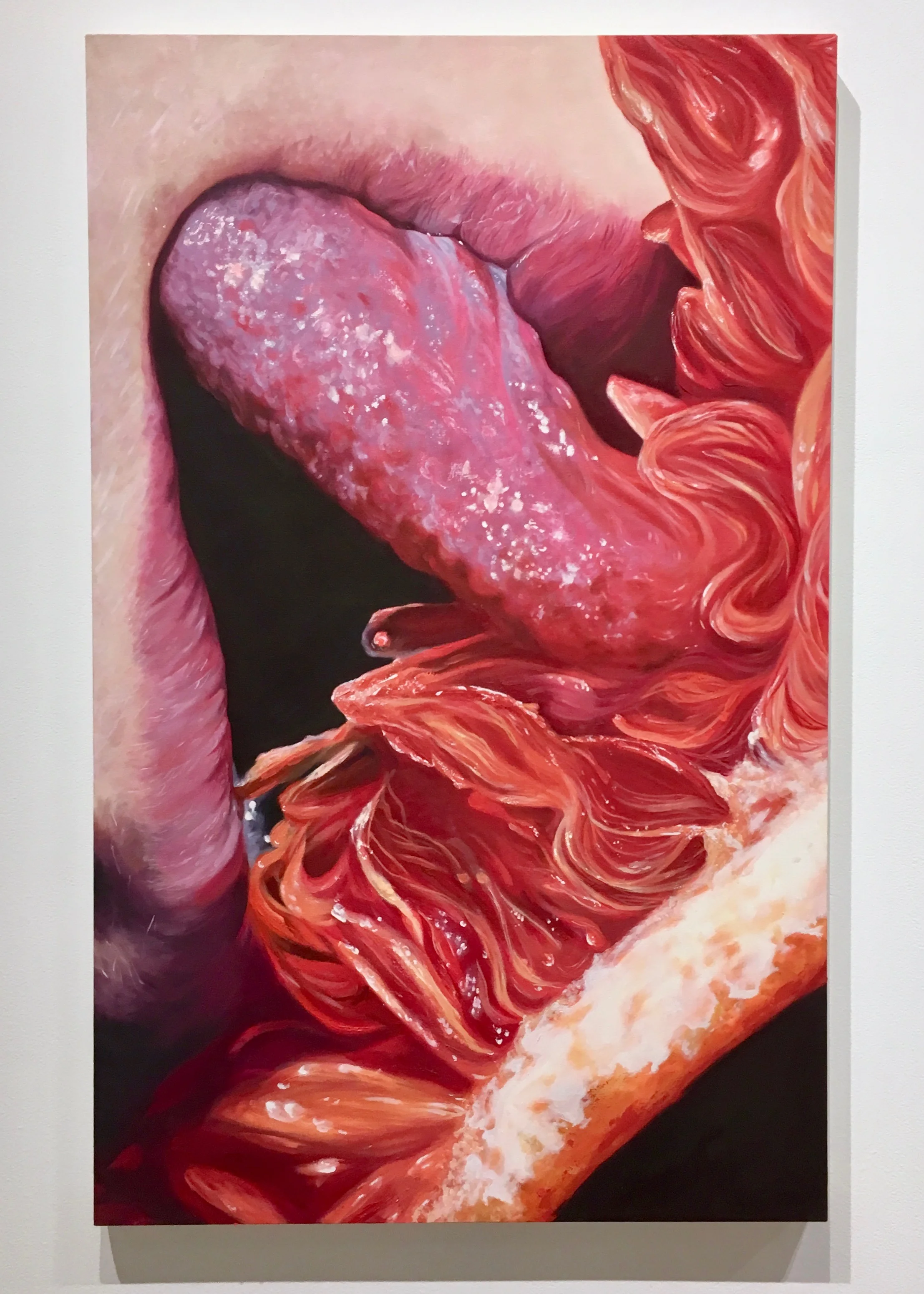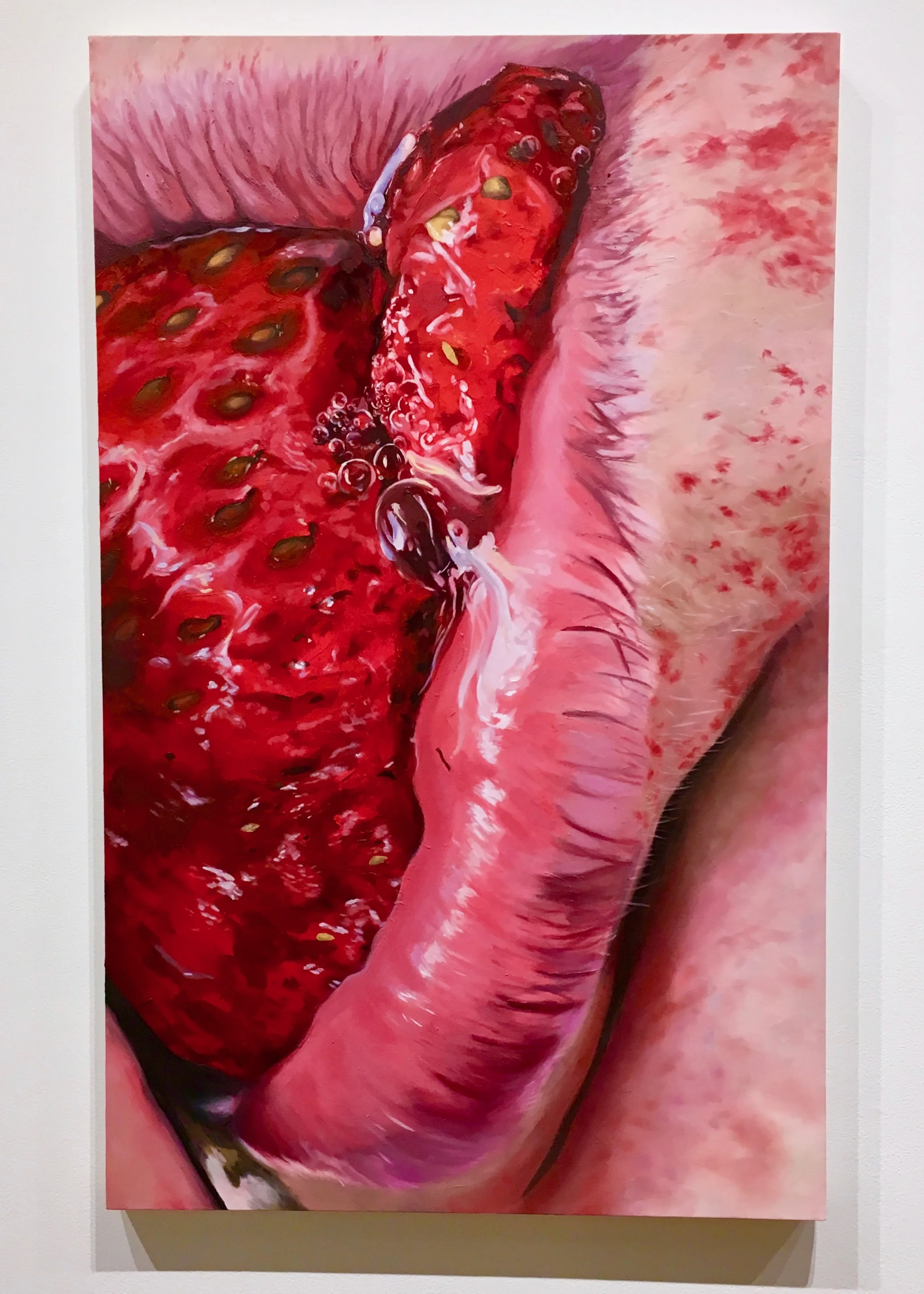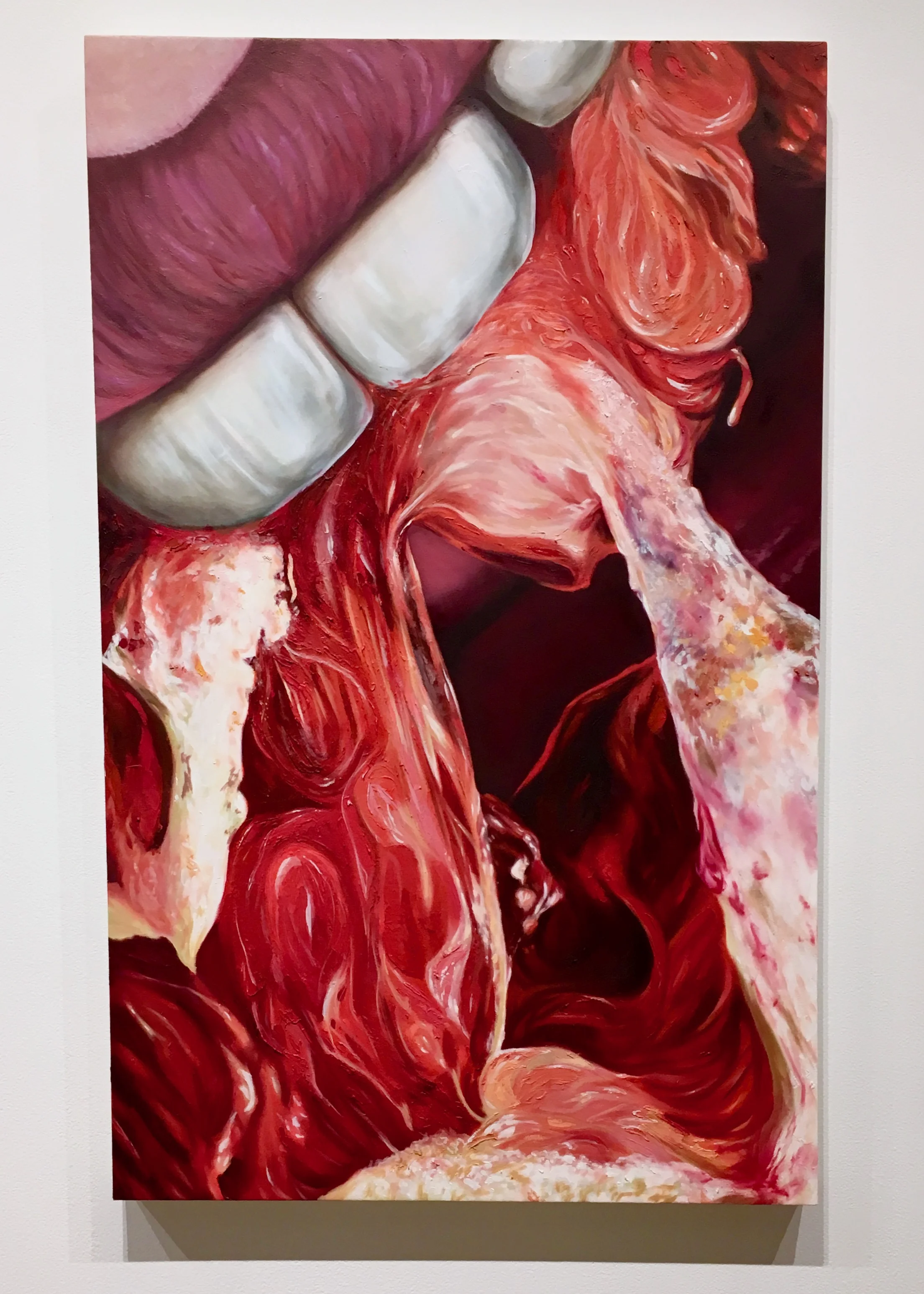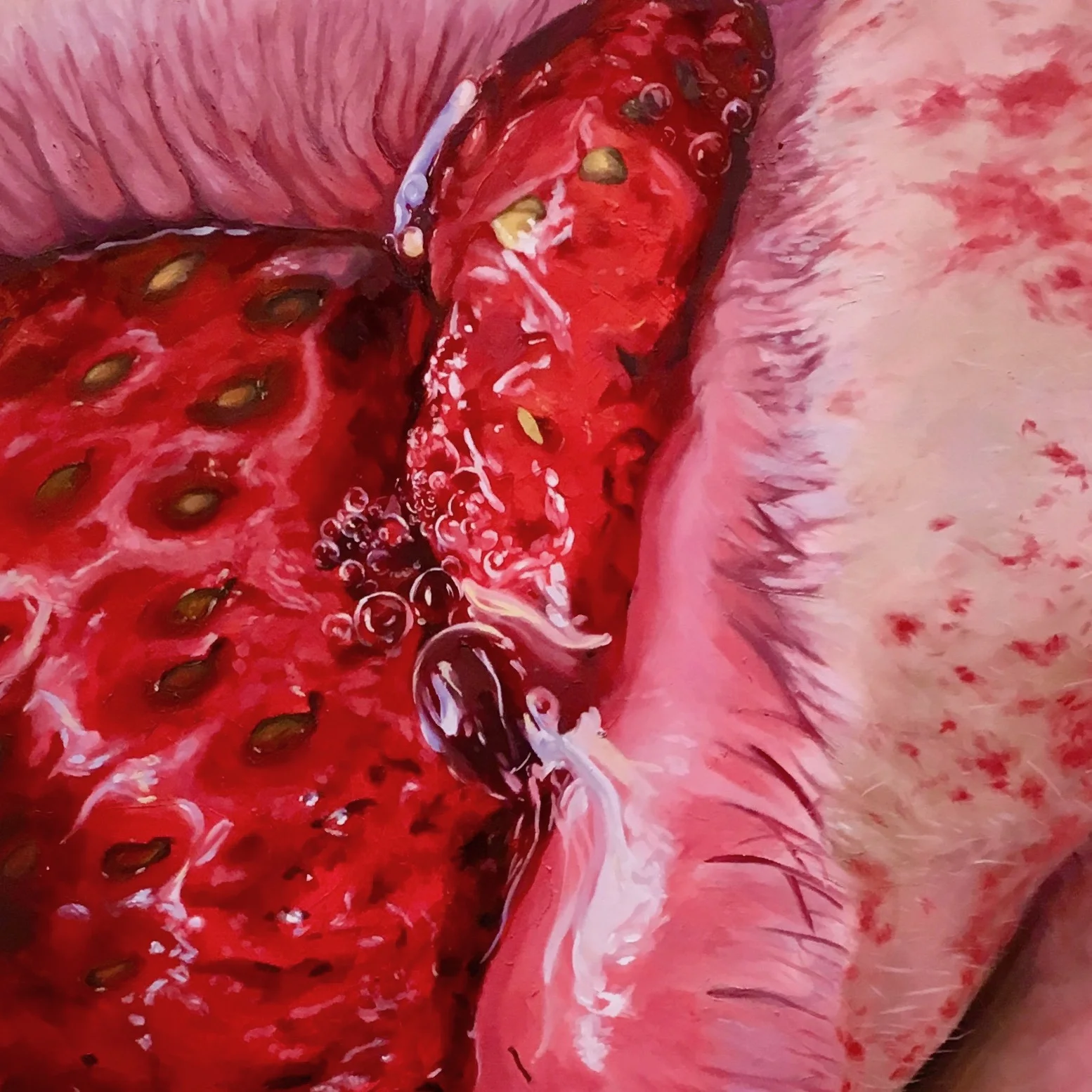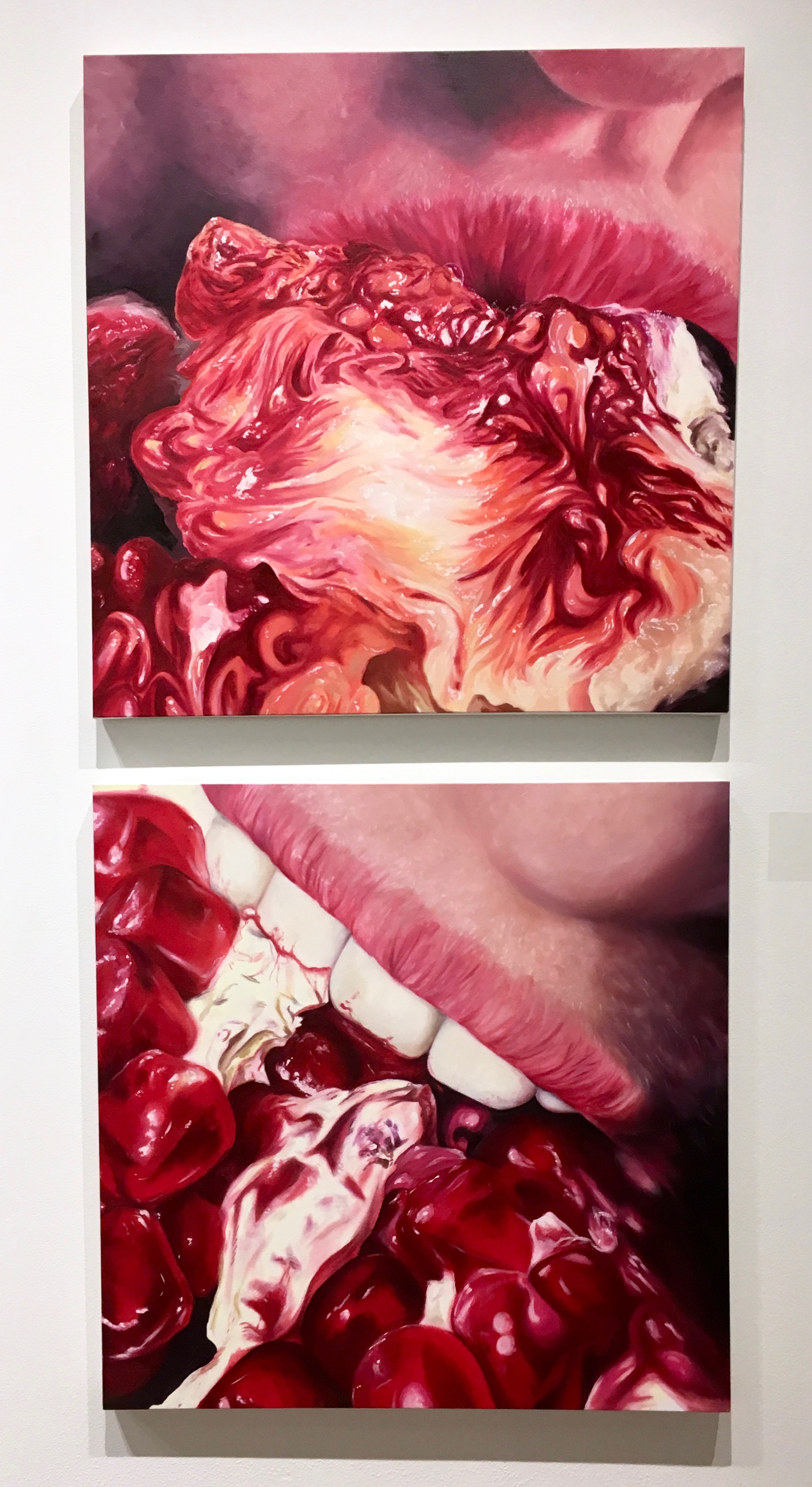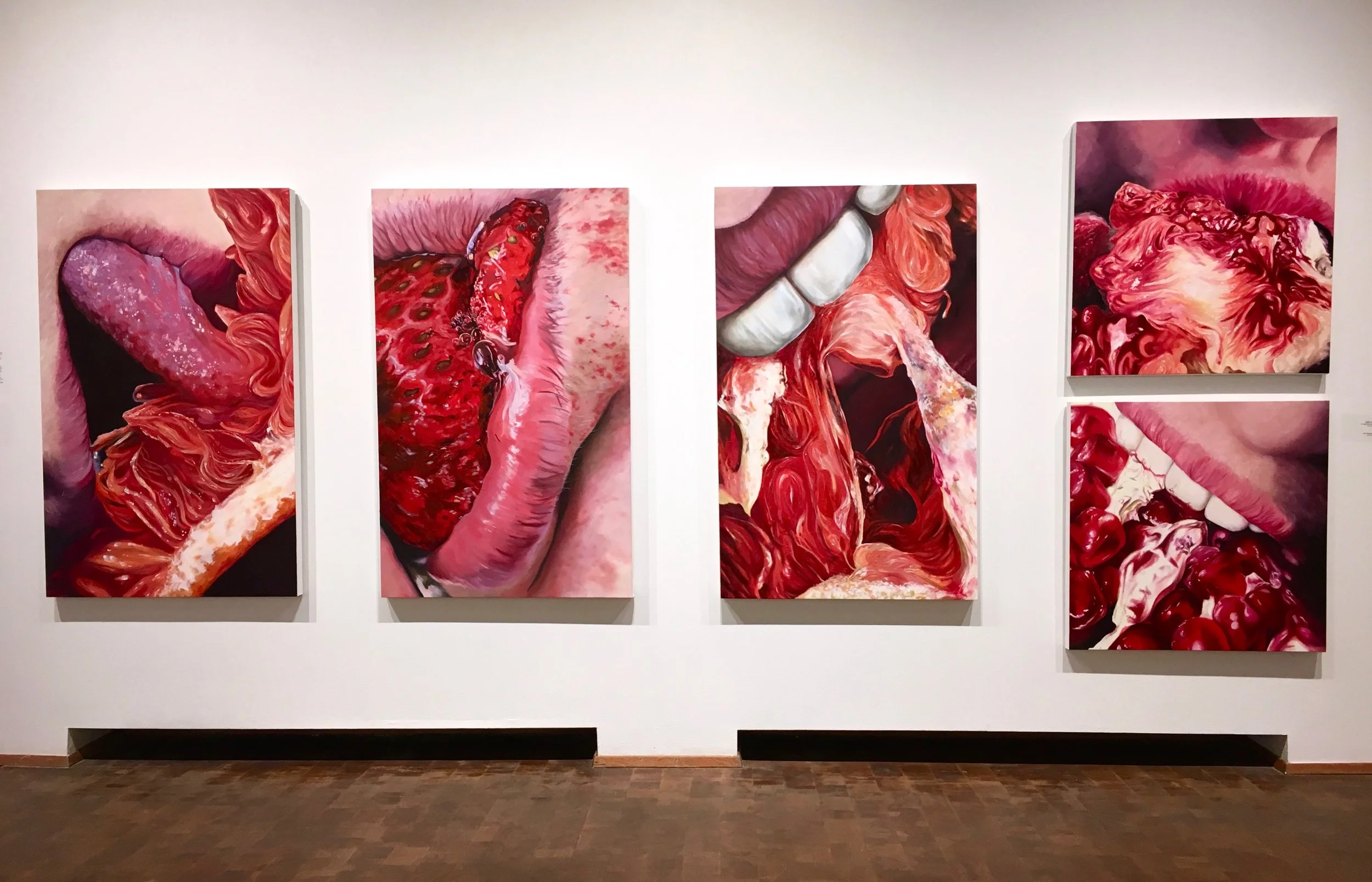On a surface level, my work is a spectacle of cravings and hunger. Indulgence, sensuality, and intimacy are all present themes in my mind. The close-ups on the mouth compare to the hyper-focus on women’s sexuality, as well as the hyper focus on food through the eyes of disordered eating. I found ways to make connections to sexuality and eating disorders through my art. With these themes, I aim to incite self-discovery through the visceral reaction of experiencing these paintings. Wether I entice, excite, or even repulse the viewer, their honest reaction is important to understanding their relation to my work.
These paintings aim to create a space for the viewer to open up about their experience with eating disorders, sexuality, abuse, and emotional trauma. I am inspired by these conversations; the issues of femininity, sexuality, and the subjective experience of our relationship with food.
With this series, there is a literal relationship between the figure and the fruit she is eating. It is physical, visceral, aggressive and sensual. The interactions between fruit and figure clearly imply pleasure, which is amplified by the intense scarlet and magenta hues. I relate these intimate encounters with emotional eating: the tendency to respond to stressful situations or feelings by eating.
In these works, the figure is replacing an intimate human connection with an act of consumption. Emotional hunger, just like physical hunger, must be satisfied. When our emotional needs are not met, our brain seeks out comfort in other ways, in this case, eating. Eating fruit is not what you expect when you think of disordered eating. I chose to draw attention to this topic because it’s a bigger issue than sexuality. These ravenous episodes of emotional eating affect us deeply, and our brain begins to associate food with comfort. Our brain starts to rely on feeding our craving rather than seeking out human connection. When we identify our true cravings, we can break this binge-eating cycle, and we figure out what is needed to be truly satisfied.
This series took me an entire year to complete. Throughout the process of making the paintings, to writing the statements, to giving artist talks, I thought about this topic a lot. I read research about the psychology behind disordered eating. I read about the relationship between a child and mother and the learned eating attitudes we develop at a very early age. I continue to have conversations about this topic with people interacting with my art, and that’s the most important impact of this project: bringing light to a subject people don’t know how to talk about, but something we all need to understand. Even if you think you have a perfectly healthy relationship with food, someone you know does not.
If you are struggling with your relationship with food, talk to a loved one, a mental-healthcare professional, or look into NEDA for further resources.. You aren’t alone.
